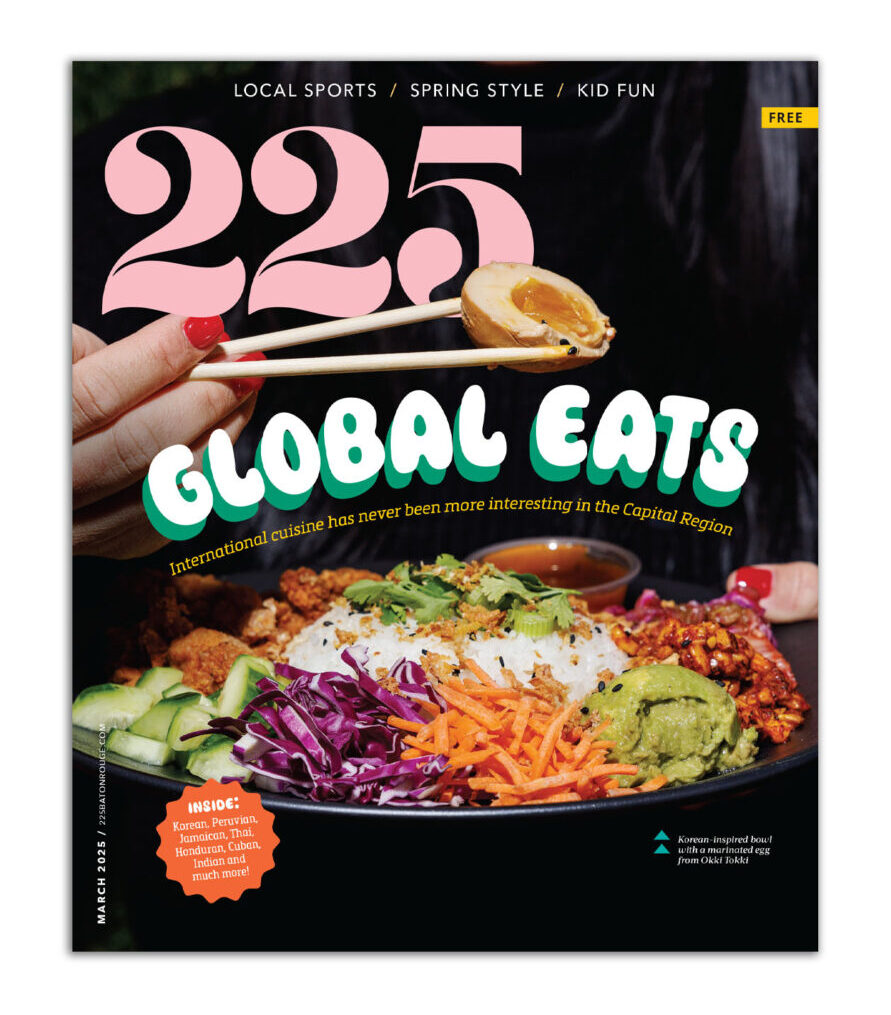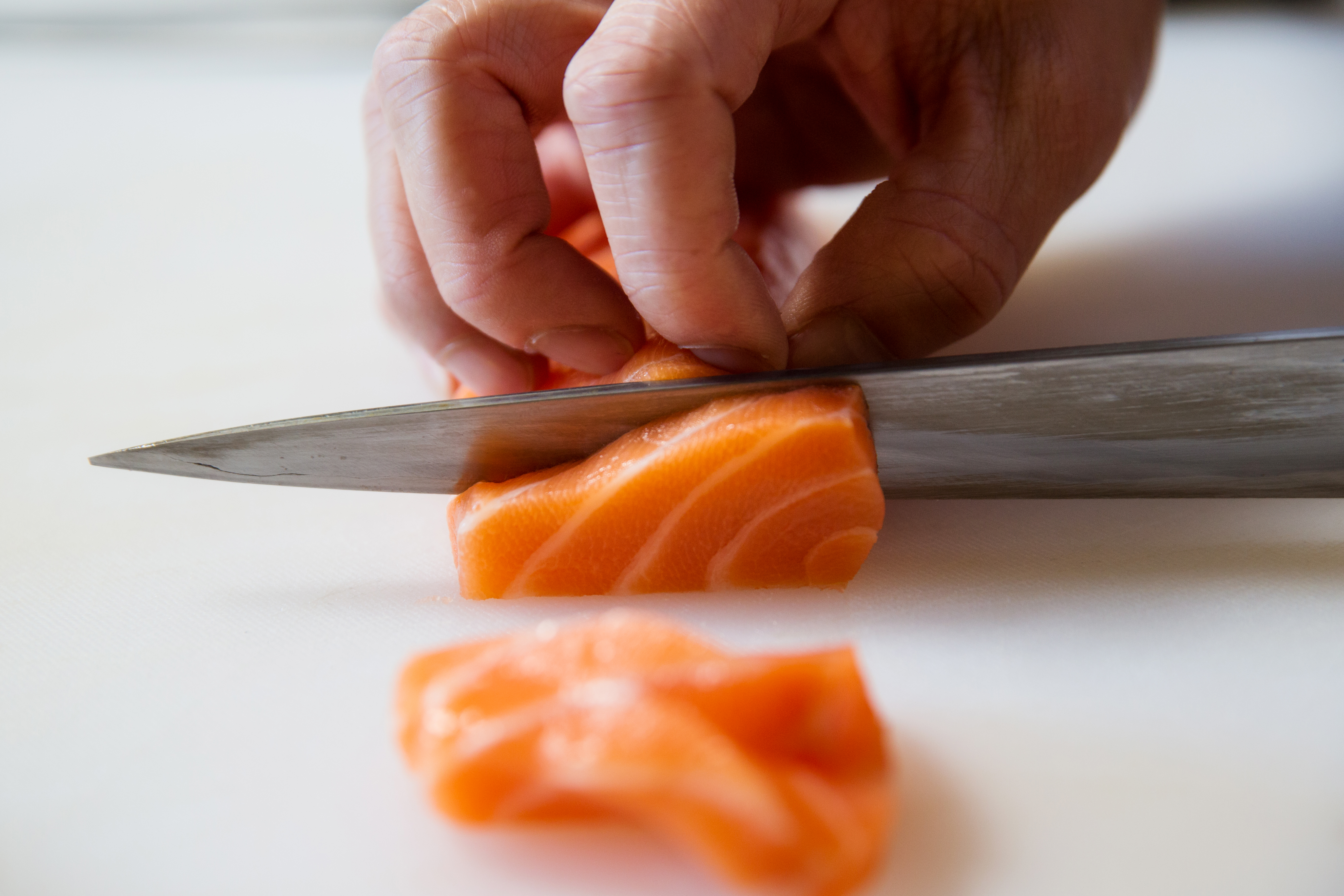When Cong Nguyen started his first cooking job, he didn’t know he was using the wrong knives.
The left-handed chef didn’t realize he was using right-handed knives. When he finally got a new knife, it changed everything.
Today, the Umami Japanese Bistro chef and owner says he can’t work with anybody else’s knives but his own.
He’s not the only chef that feels that way. Top Chef’s famous catchphrase dismissing eliminated chefs is “pack your knives and go,” and the poignant scenes of the chefs stowing away their tools seem to say, “I lost the show, but I still have my knives.” Chefs view their knives as an extension of themselves. Nguyen compares it to driving your own car—it’s just more comfortable.
Knives take on lives of their own, carrying memories and stories. Sitting at Umami today, Nguyen admires one he’s had for 14 years. “I did at least 10,000 sushi rolls with this,” he says, turning it over in his hands.
The knife has a broken handle now, but Nguyen thinks sometimes about shipping it to the company that made it and having them fix it up for him. No matter what, he plans to keep it for sentimental reasons.
Ultimately, his knives are his most powerful tool as he strives to make waves with his food.
“If I eat good food, I’m happy. It’s like my meditation,” he says, adding, “When people have that first bite of our food and smile and make that umami noise?” That’s when he knows he’s done his job right. umamibr.com
• Cleaning: Wipe immediately after using to remove food particles. Run under hot water and wash with gentle soap. Wipe dry. Use a rust eraser to eliminate spots. Never leave your knives in the dishwasher or soaking in the sink, or you’ll risk rusting and dulling the blades.
• Sharpening: Dull knives are dangerous because they’re more likely to slip during cutting. They can also affect how evenly your food cooks and your ingredients’ texture. Cong sharpens his knives five times a week, and how often you sharpen yours will depend on how often you use them. In general, if you have trouble slicing, it’s probably time to sharpen. There are many sharpening tools available; Cong uses a 1,000-grit whetstone.
• Storing: Keep knives where they won’t be exposed to water or dust, like a knife block or drawer. Cong likes to cover his with a wooden guard he bought from Japanese company Korin.
• Slicing: Using knives on hard surfaces can dull the blades. Cong likes slicing sushi and raw fish on polyvinyl acetate, a softer board surface. Wood cutting boards work, too. When slicing protein or veggies, try to make your cut with one smooth, clean movement. Slicing the same spot more than once will bruise or change your ingredients’ texture.
BLADES OF GLORY
Nguyen explains his every day knives and what he uses them for and talks about some of his old, reliable knives. Hover over the image to find out which is which:
Click here to read more from our Kitchen Confidential cover story.
This article was originally published in the December 2017 issue of 225 Magazine.










